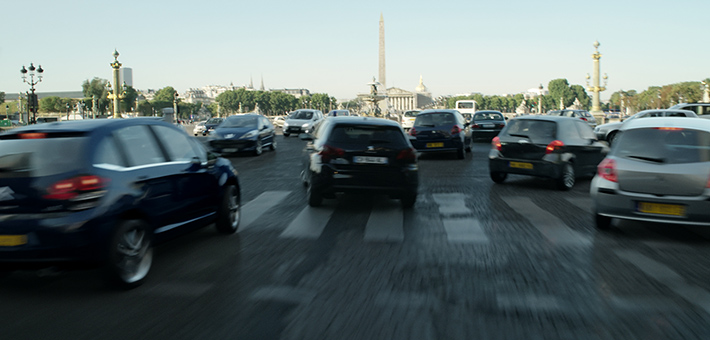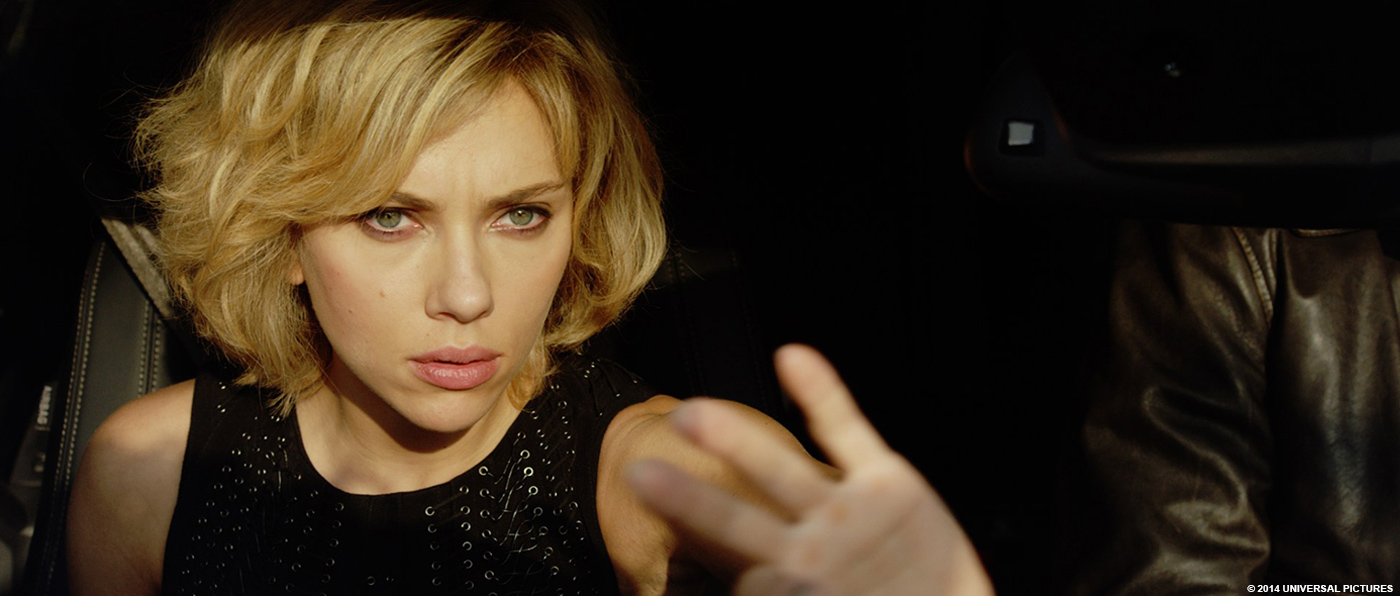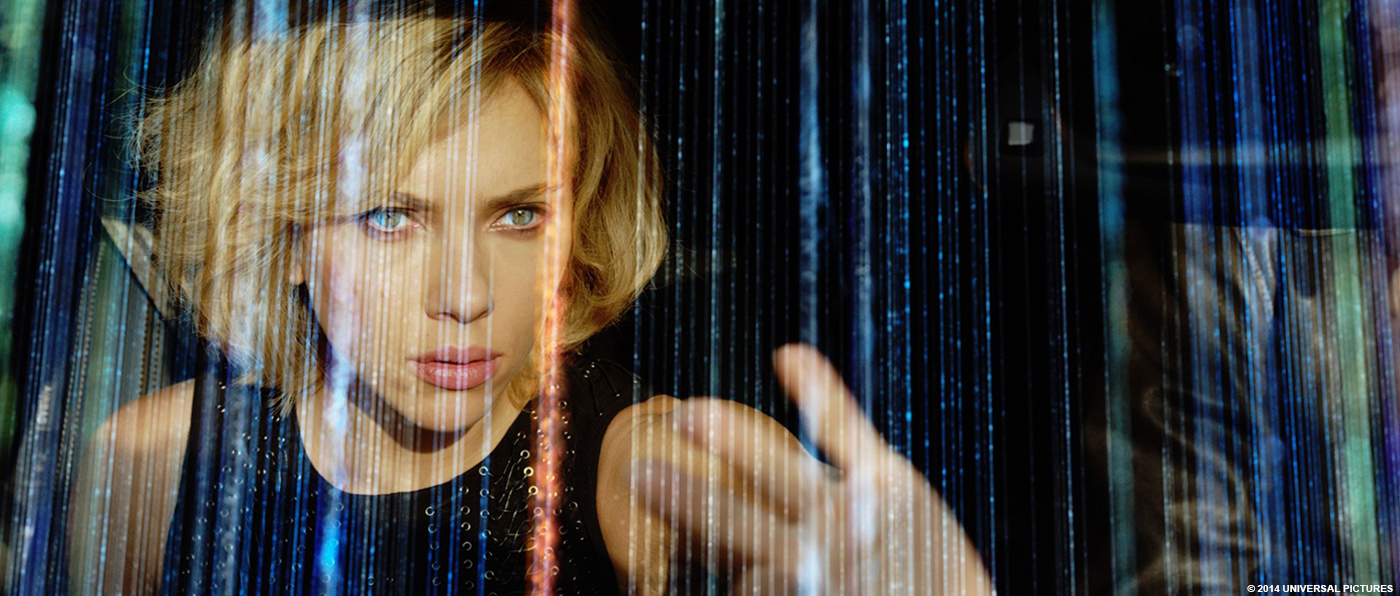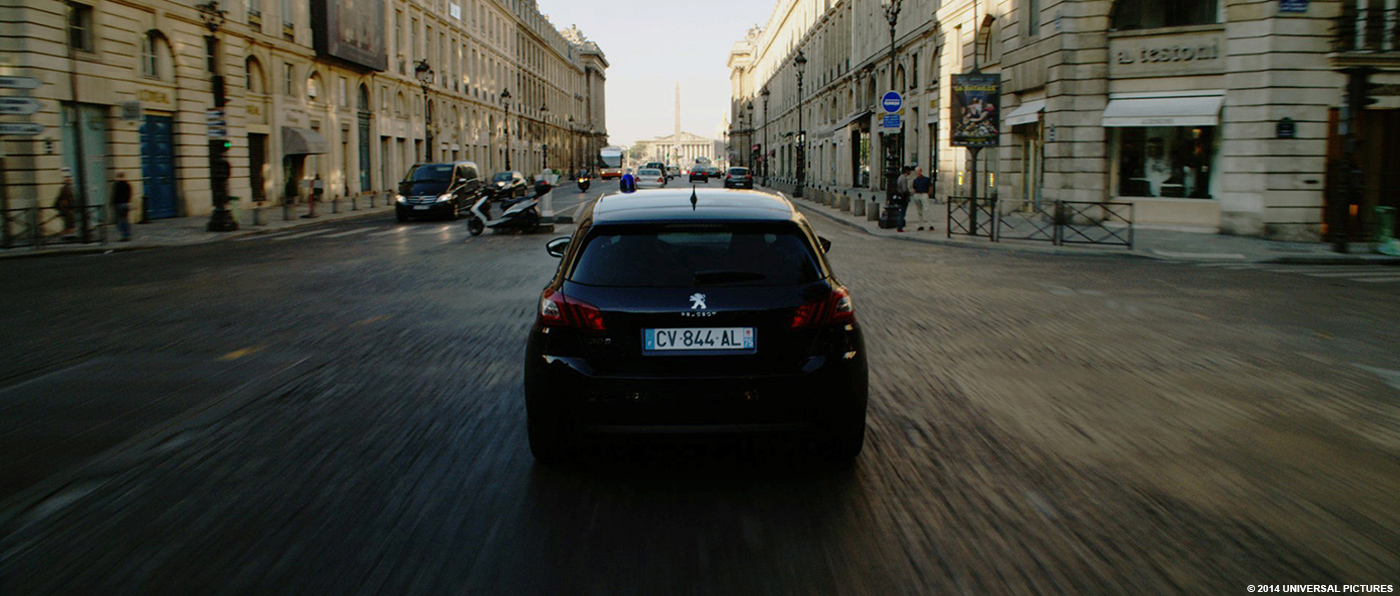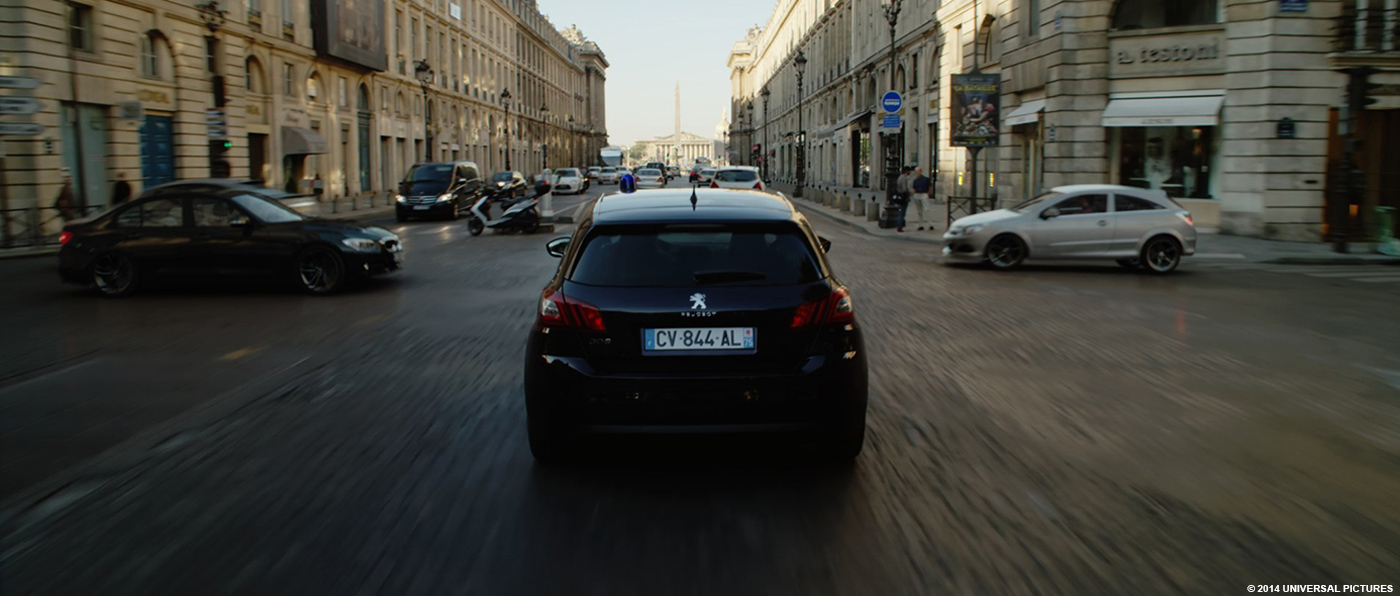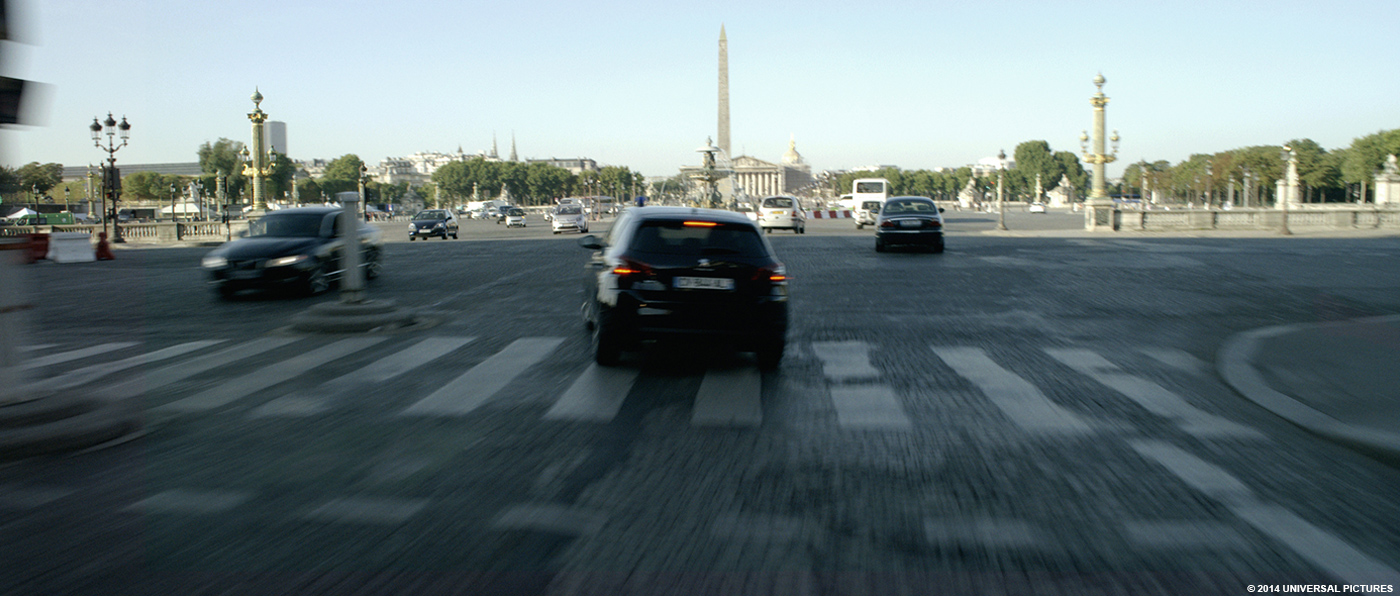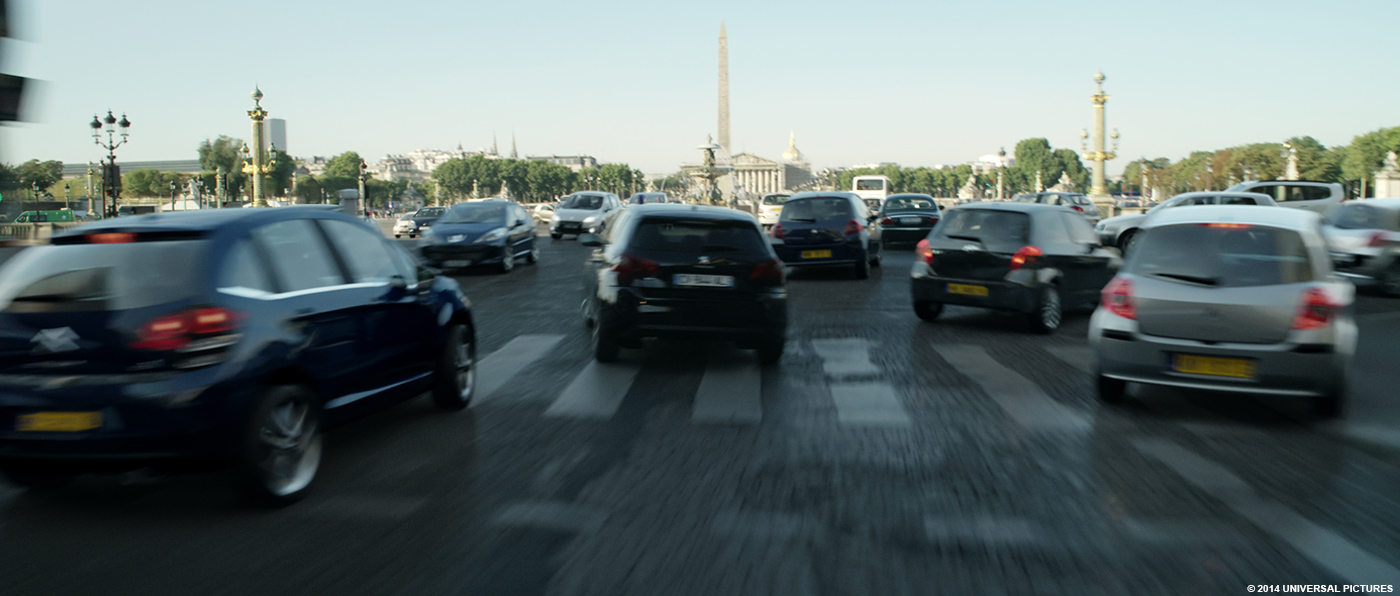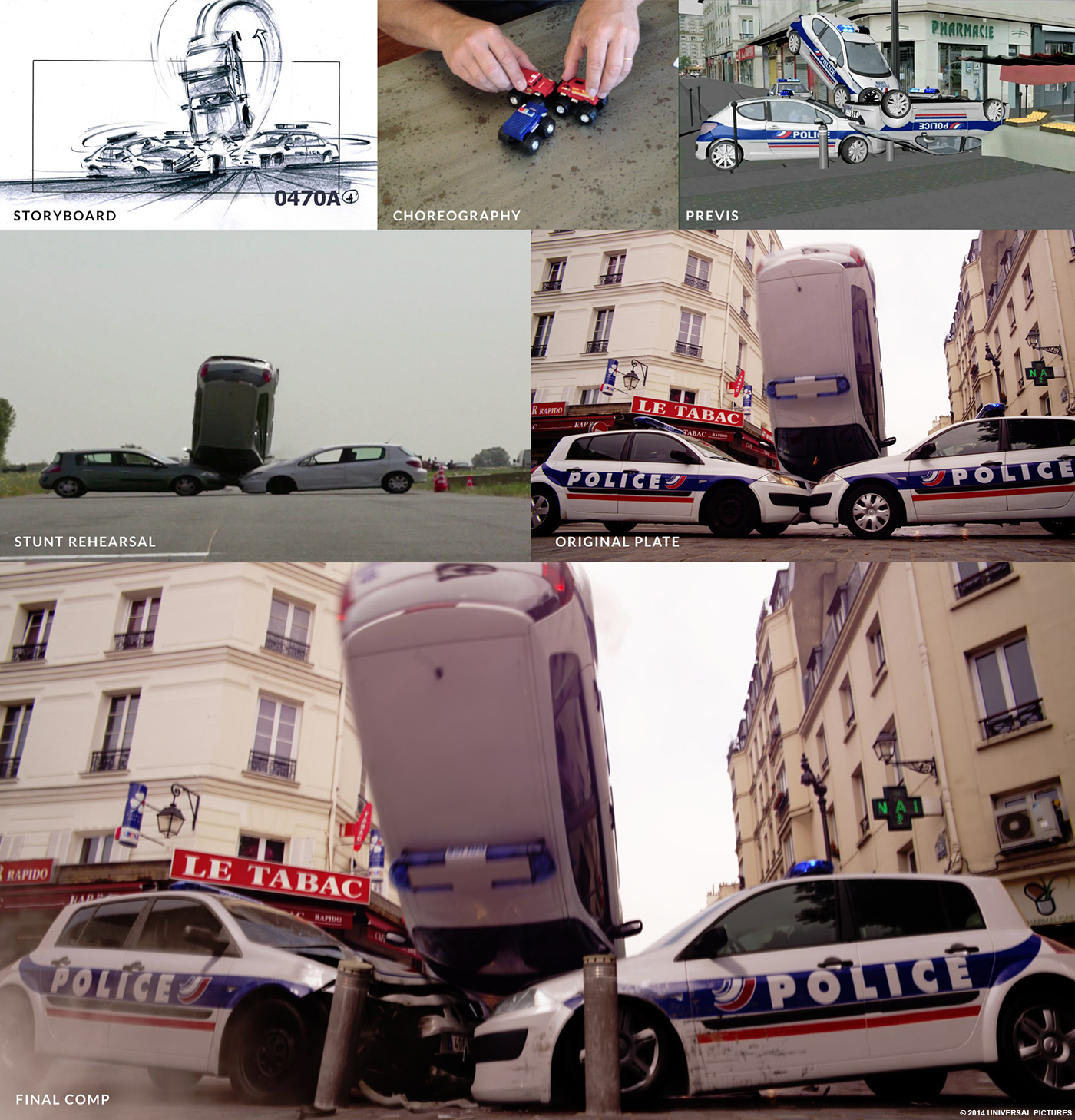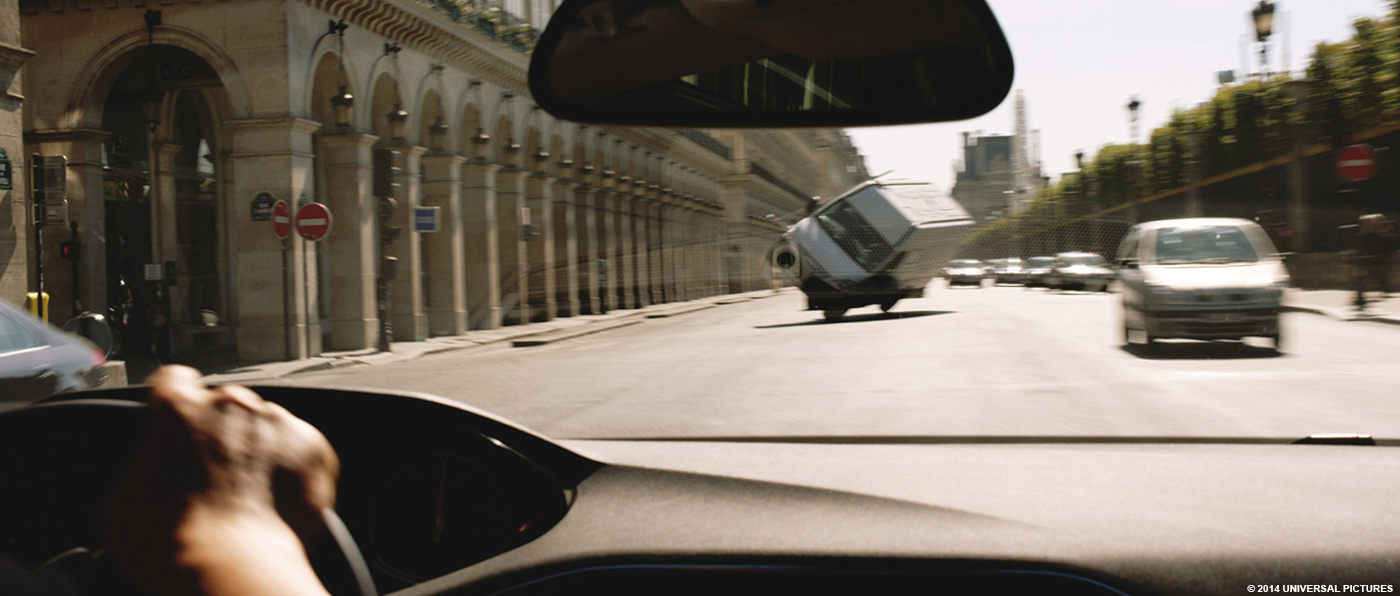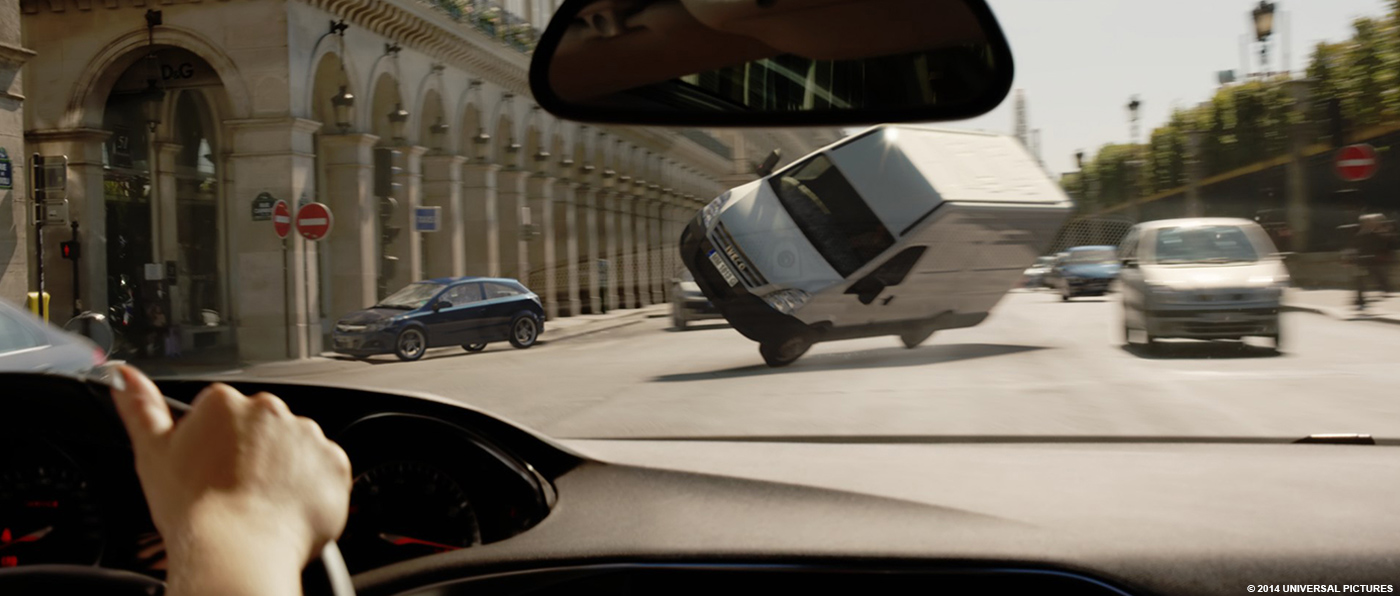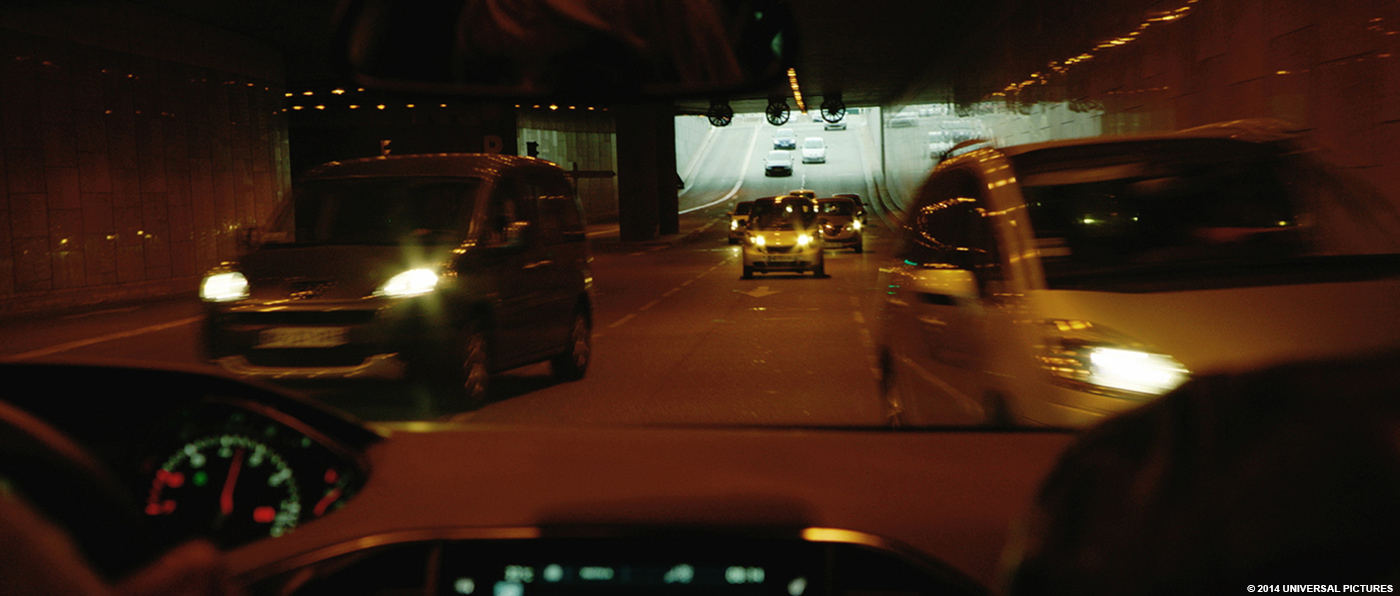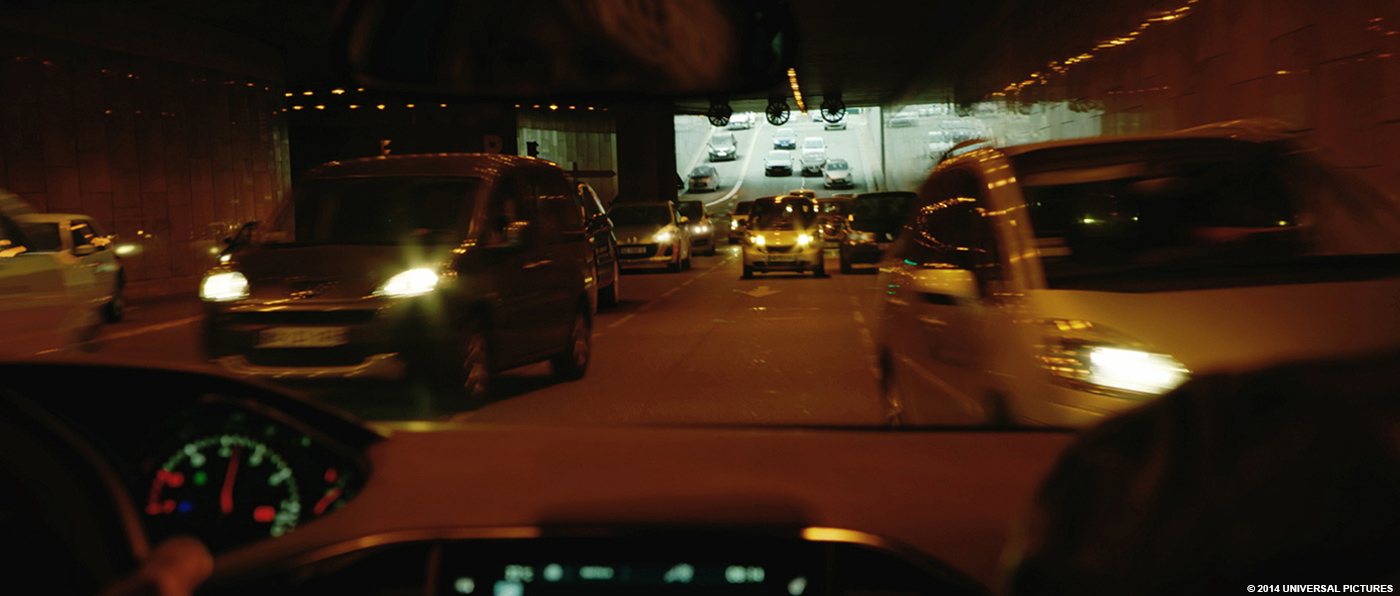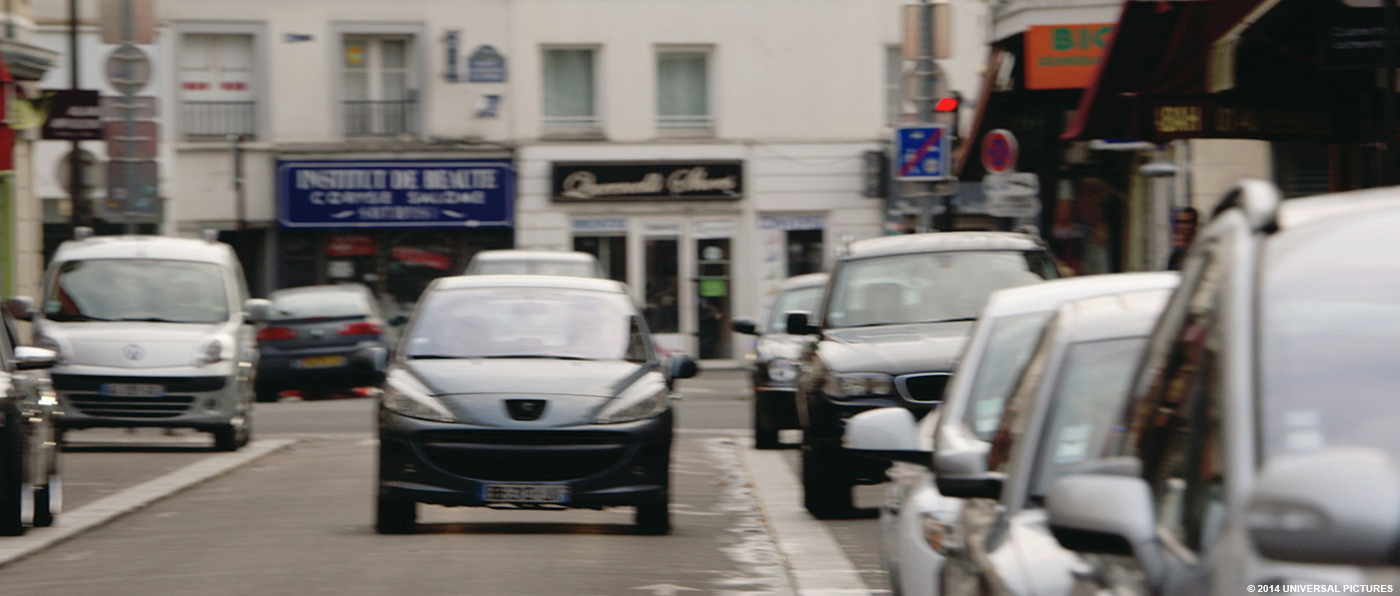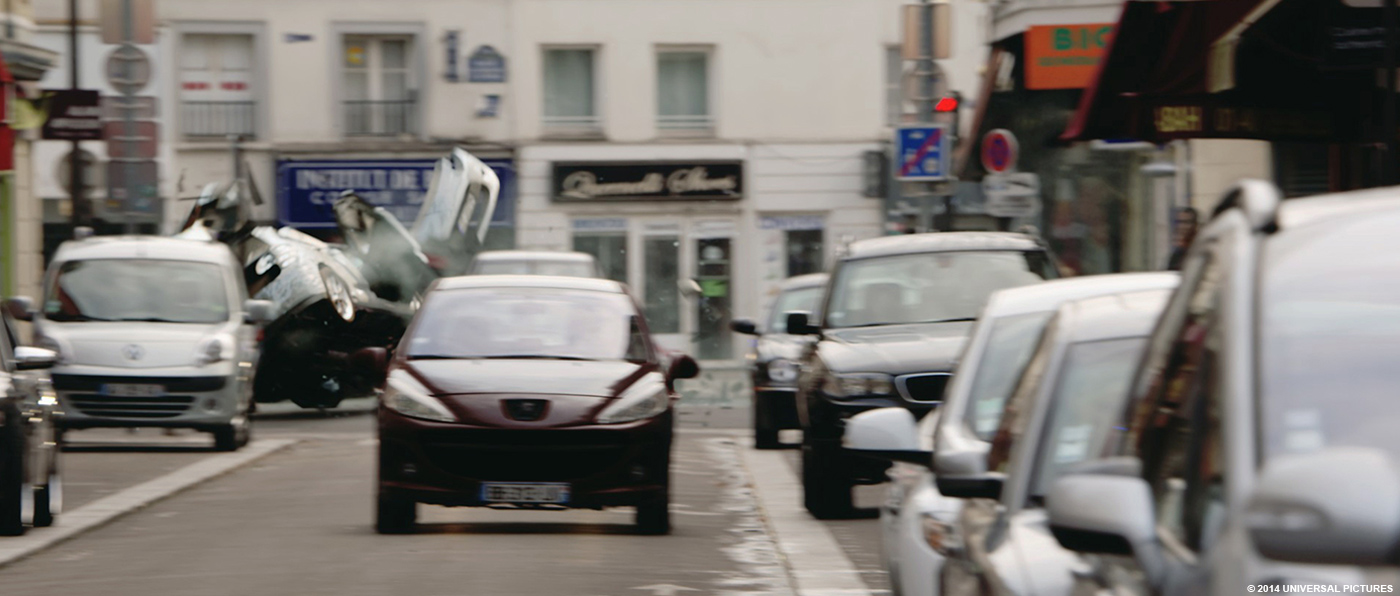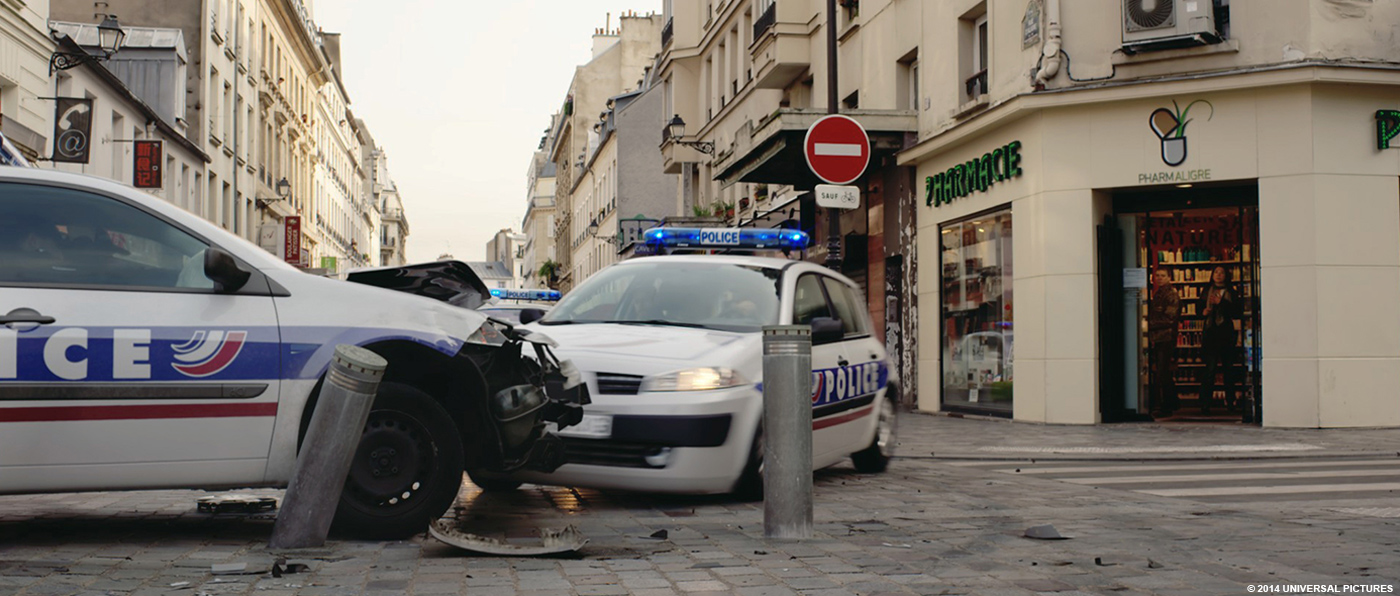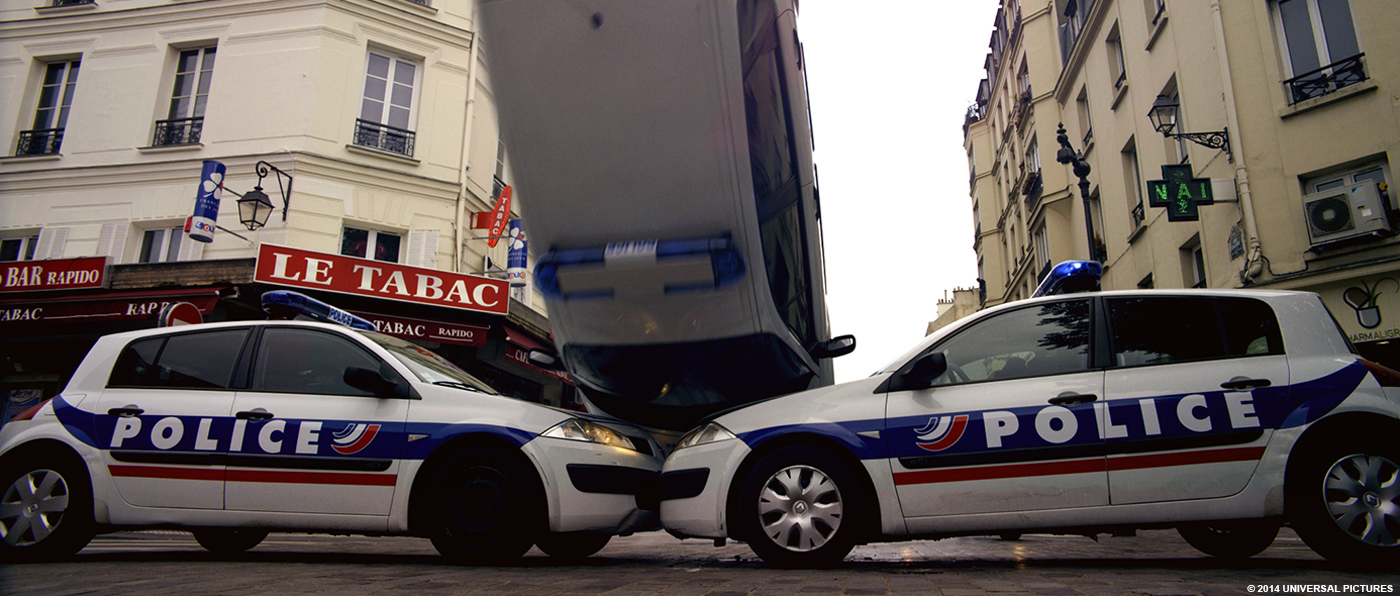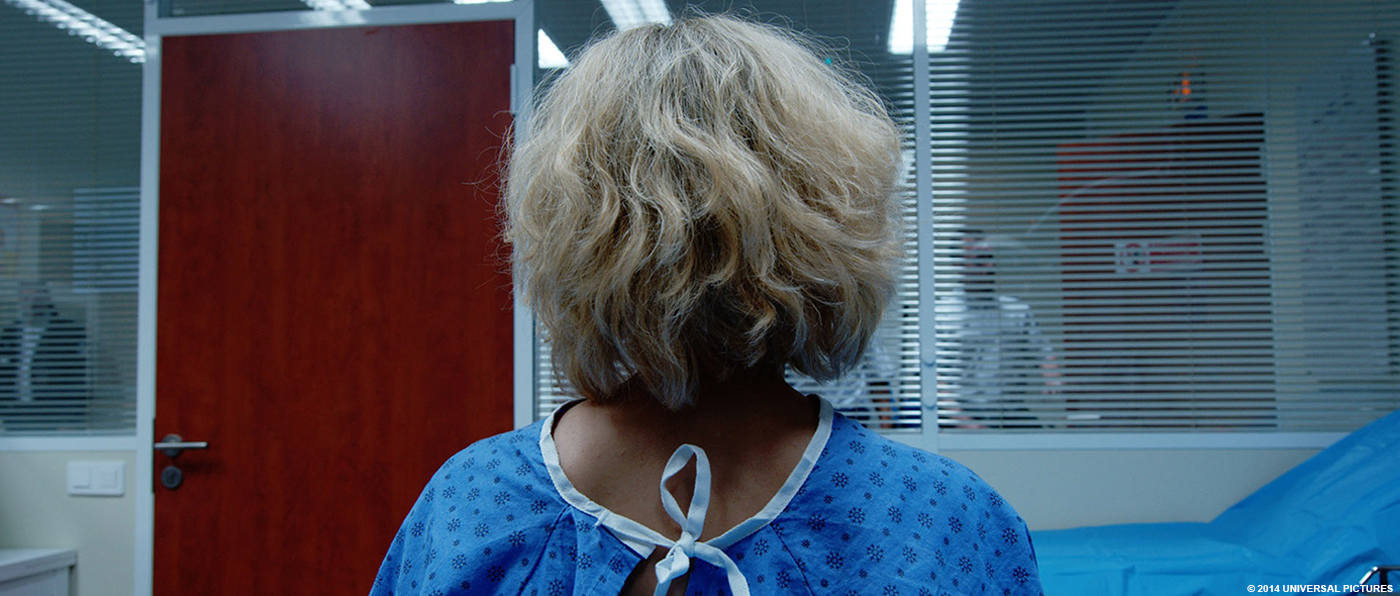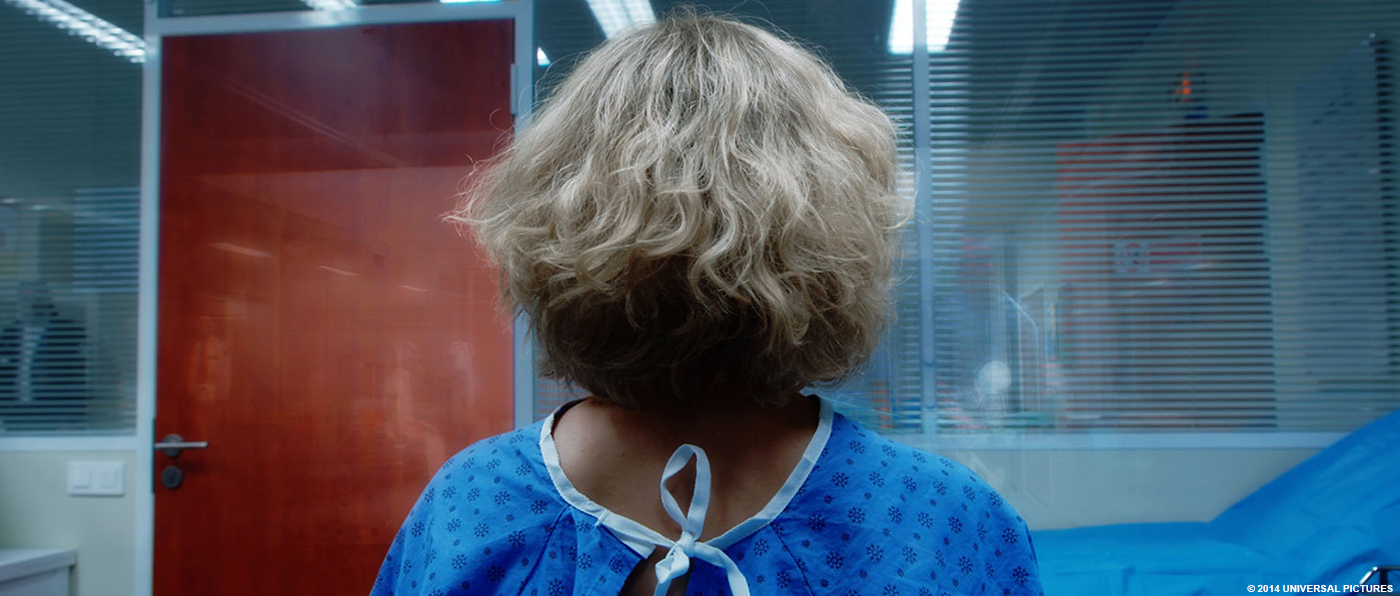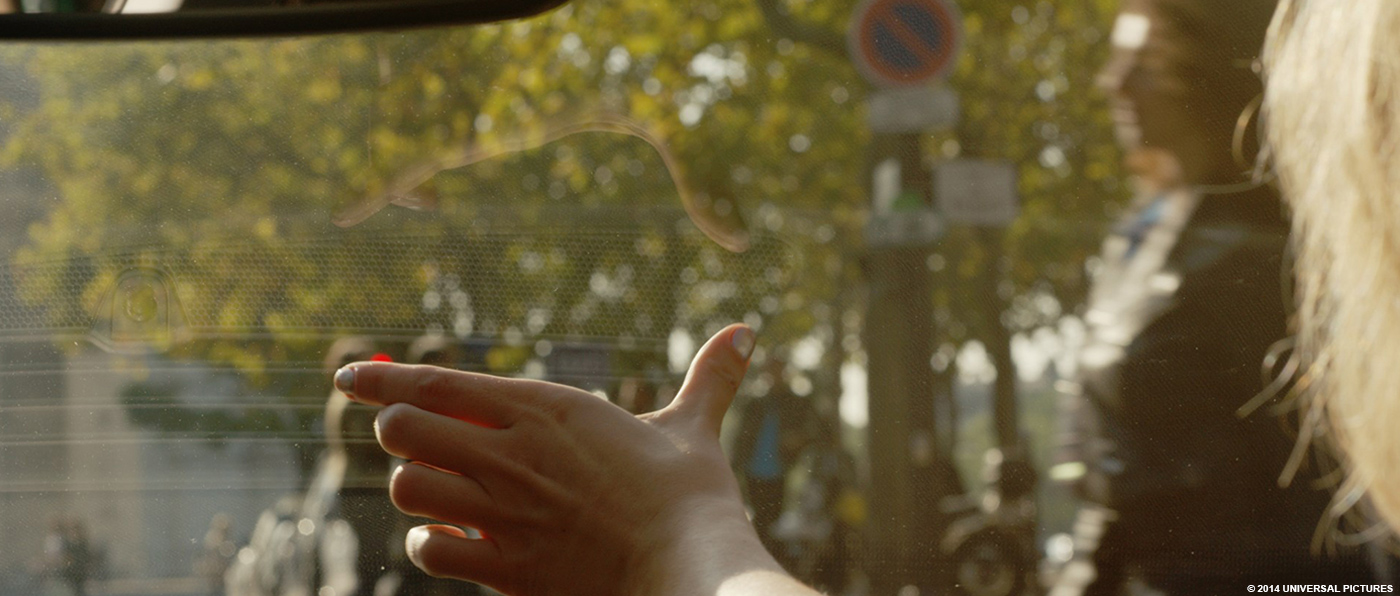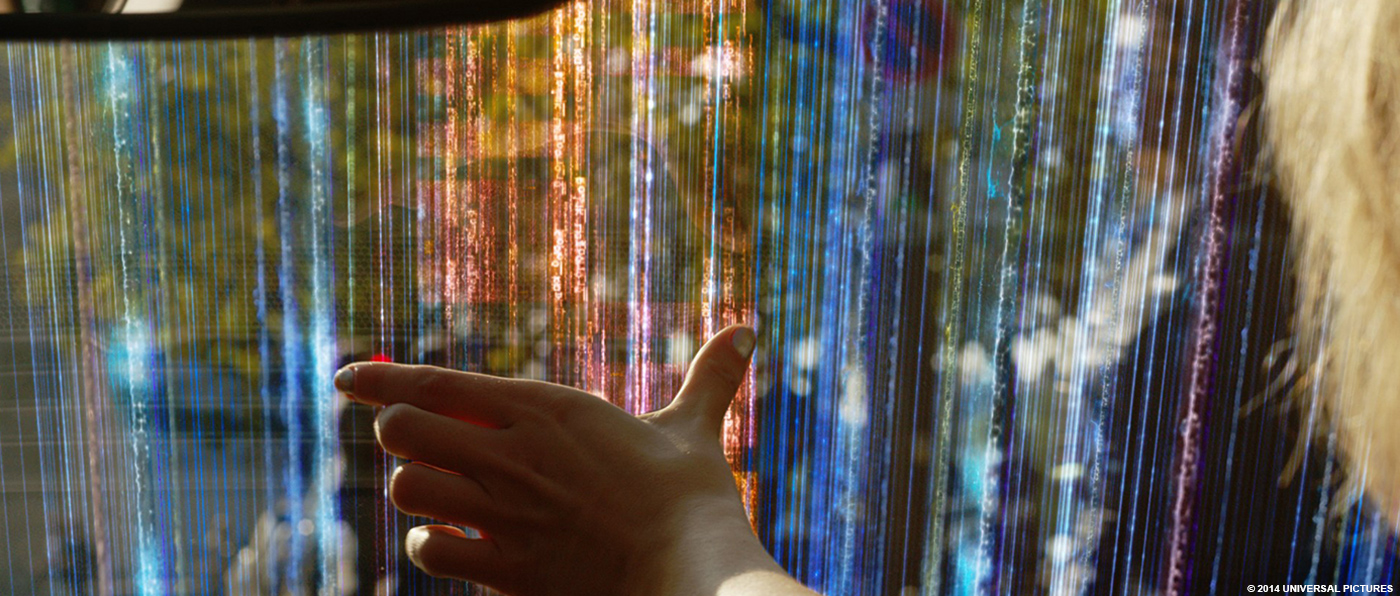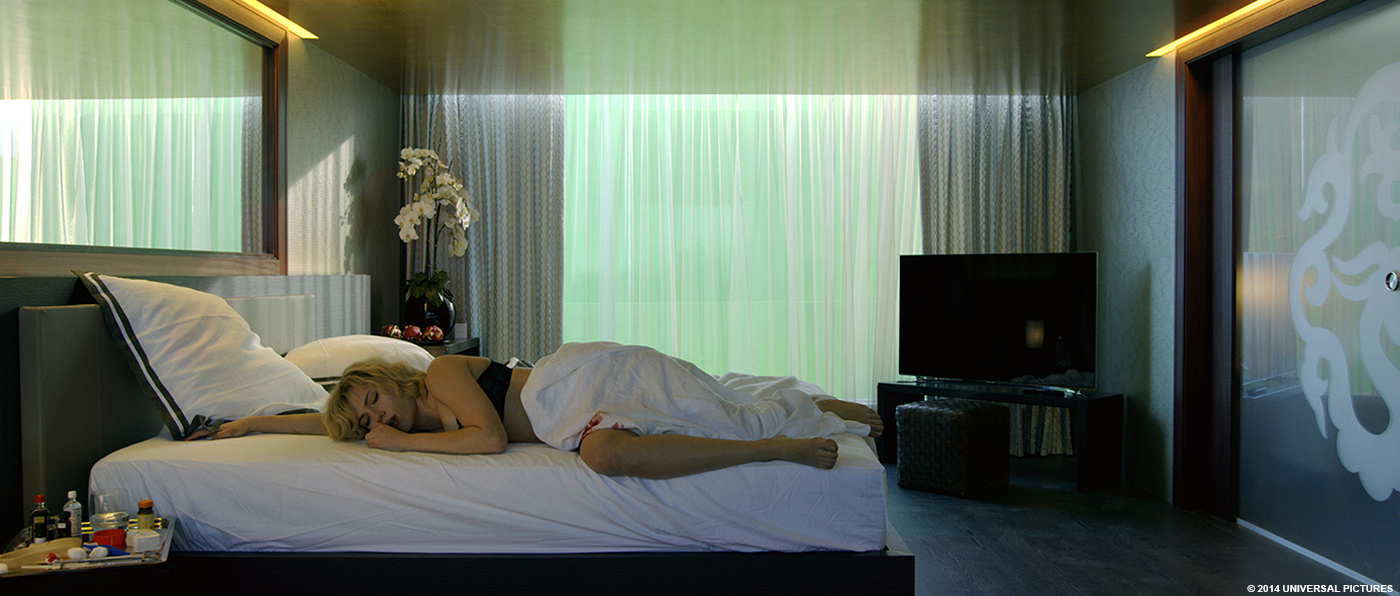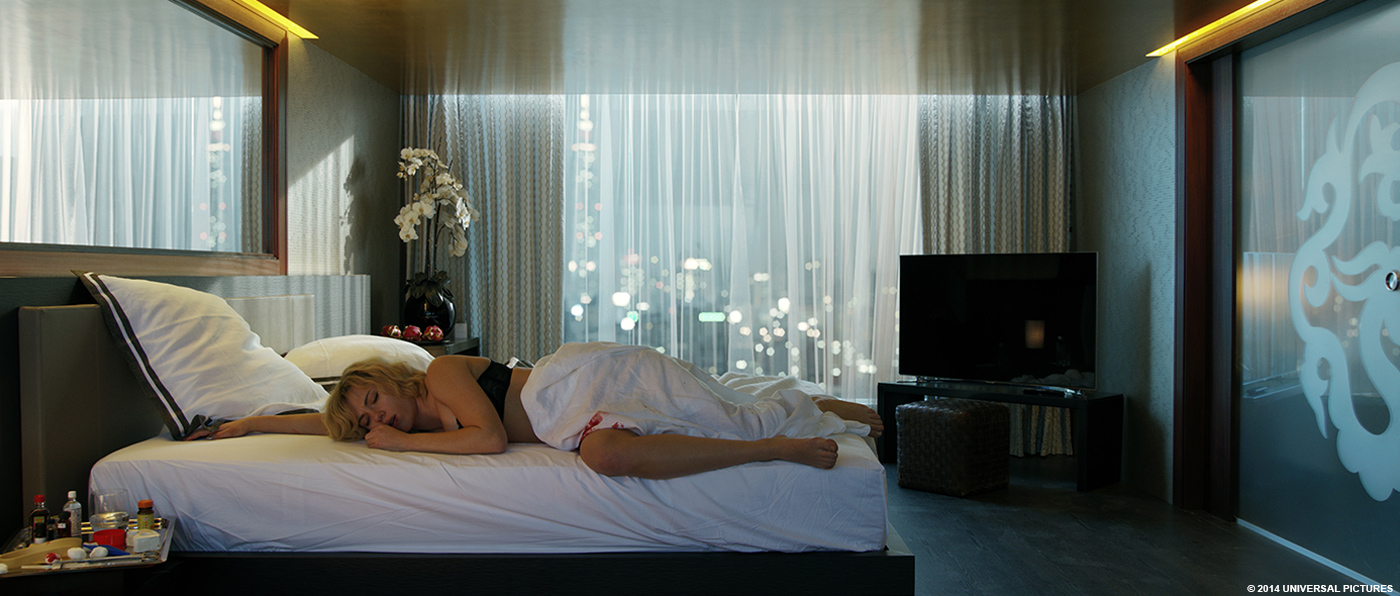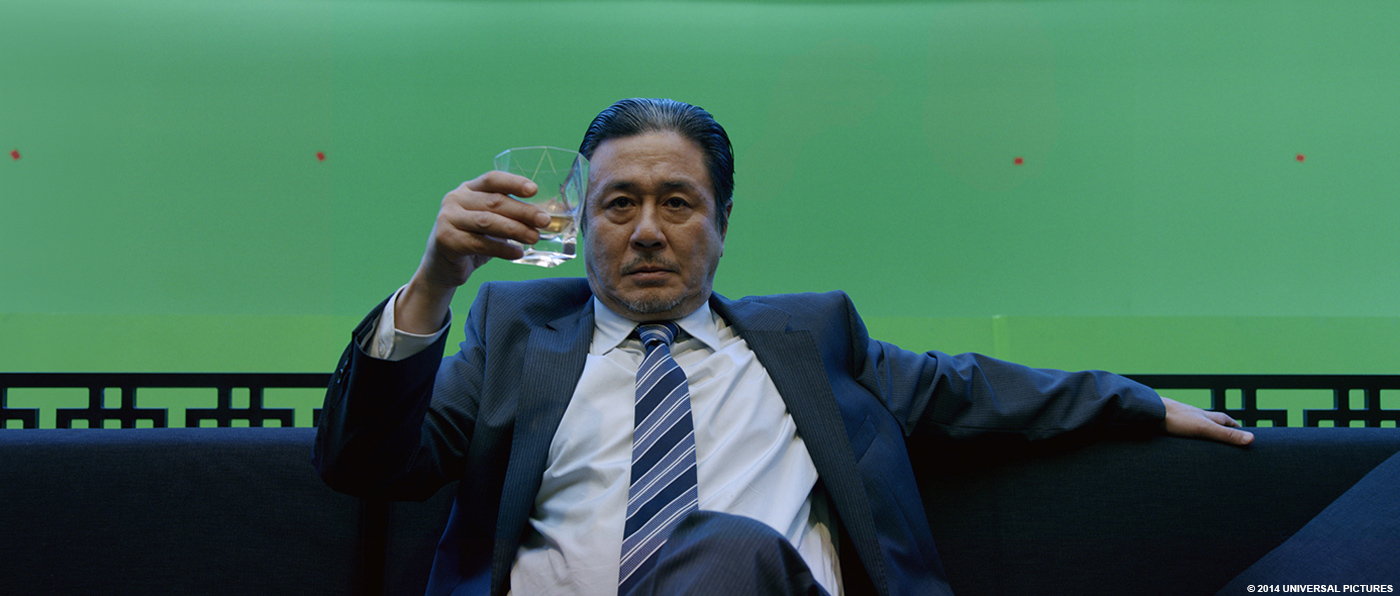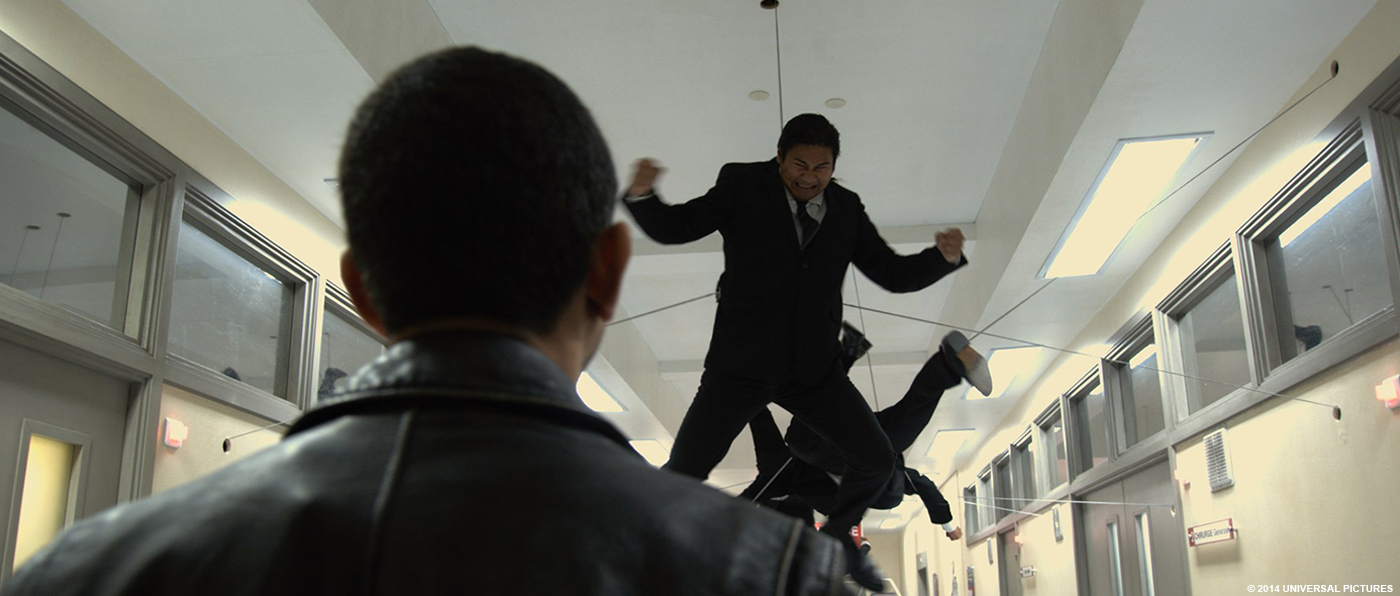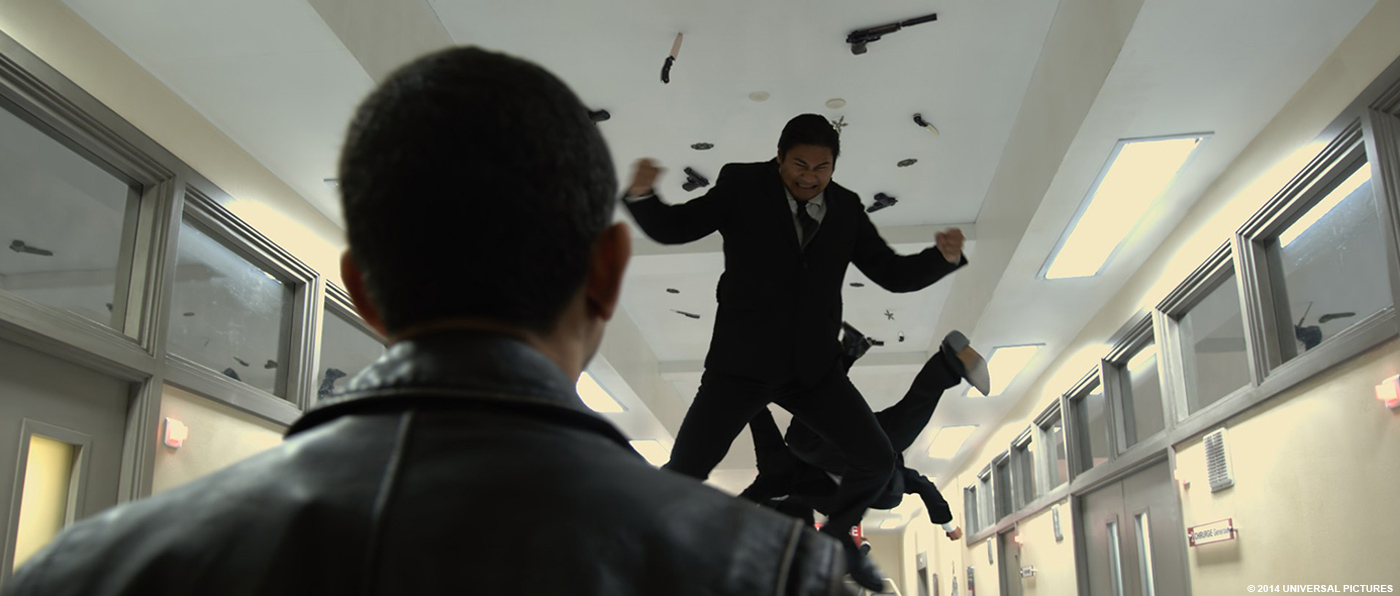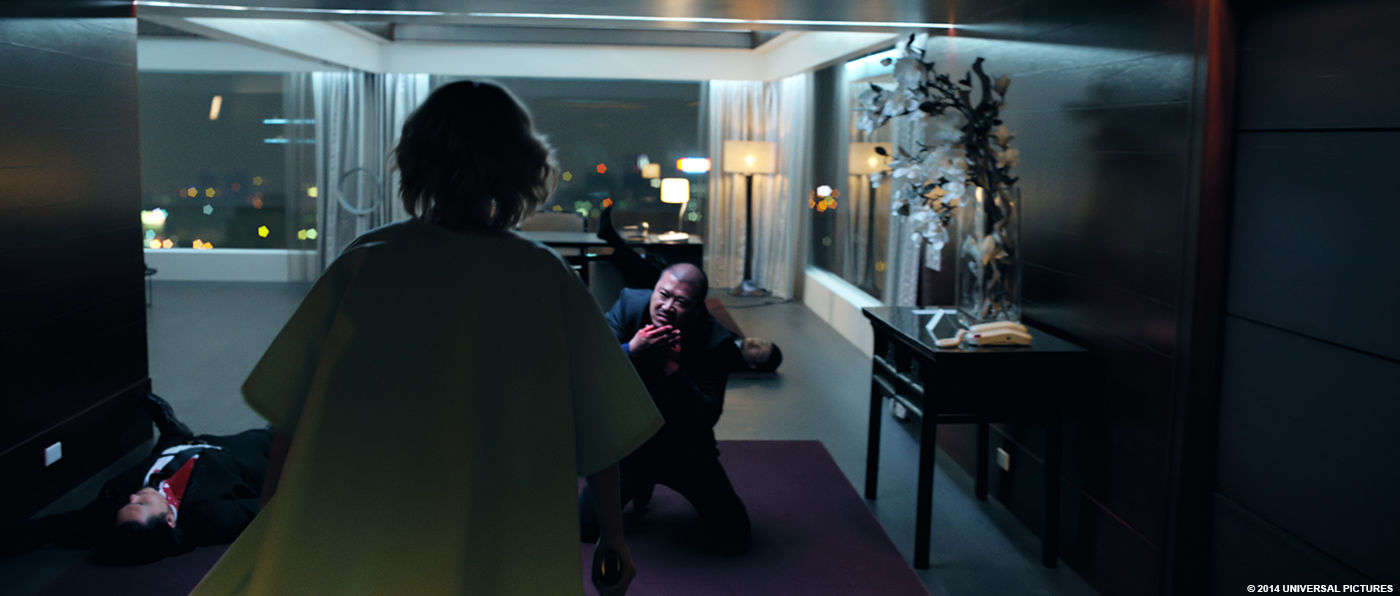Francois Dumoulin is in the VFX industry for more than 16 years. He is one of the founders of Parisian studio La Maison where he worked on films like THE MAN WITHOUT A HEAD, DEMONLOVER, LES ENFANTS DE TIMPELBACH or UPSIDE DOWN. He joined Rodeo FX in 2012 and worked on projects such as NOW YOU SEE ME, THE HUNGER GAMES: CATCHING FIRE or PACIFIC RIM.
What is your background?
I got immersed into movies and computers in my early childhood, thanks to my family. Along with my writing and personal practice of photography, I studied Drawing and Architecture at L’École Nationale Supérieure des Art Décoratifs, and then took on History of art and Ethnology at the Sorbonne in Paris. I earned a Master’s Degree in Movie directing at L’École Supérieure de Réalisation Audiovisuelle, also in Paris. In the mid-nineties I once walked into a room to discover a Flame compositing station, and that was it! I started working as a compositing artist, moved to on-set supervision all over the globe and became a founding member of La Maison, a Paris-based high-end visual effects boutique. After directing short films, music videos and commercials, I became VFX Supervisor for feature films, which brought me to Montreal for a movie called UPSIDE DOWN. I eventually met with Sebastien Moreau and decided to join the Rodeo FX team in 2012.
How did you get involved on this show?
Rodeo FX was the main vendor on NOW YOU SEE ME with VFX Supervisor Nick Brooks, and the work included a car chase with lots of CG vehicles. Nick was very pleased with the result and got us on board, as he was also VFX Sup on LUCY.
I had also previously worked with VFX Producer Sophie Leclerc, being the production supervisor on UPSIDE DOWN, and we were definitely longing to the next time we could team up on a project. Well, LUCY came and made it happen!
How was the collaboration with director Luc Besson?
Luc came to visit Rodeo FX weeks before we closed the deal. We gave him a tour of the facility, and he met with some of the artists he was going to be working with. That is rather unusual and I found it very respectful. Later, I spent a bit of time with him and Nick Brooks during the last days of preparation, tech scouts, and so on. I really got to appreciate his personality and enthusiasm when I was on set with him. During postproduction, I would only be in contact with Nick, who would show our work to Luc and give us feedback on a daily basis.
What was his approach about the visual effects?
He’s the kind of Director who knows exactly what he wants to tell with every single shot, but stays open to suggestions as to how to achieve it. Although he is very familiar with visual effects, Lucy was the biggest VFX show he has ever done. He relied totally on the strong technical skills and artistic sense of Nick Brooks.
How did you work with Production VFX Supervisor Nicholas Brooks?
Since LUCY was our second collaboration with Nicholas Brooks, he had a pretty good notion of what to expect from us. Moreover, having previously worked on another car chase sequence with Rodeo FX, Nick was already familiar with our methods, workflow, and pipeline, since he had spent a fair amount of time with some of our artists during NOW YOU SEE ME. We could feel he was really comfortable having us participate to this challenging sequence. And the major benefit of that was to be given considerable (and appreciated!) creative freedom. Nick provided initial turn over notes as to where they wanted the CG cars, the timing of the different crashes, and so on, but he was really open and would always consider our input and suggestions.
What are the sequences done by Rodeo FX?
The main visual effects vendor for LUCY was ILM, and Rodeo FX was initially awarded the breath-taking car chase through the busy streets of Paris. That scene alone was already an exciting package but we actually ended up doing a lot more. Rodeo FX designed the colorful light rays emitted by the various mobile devices, as well as Lucy’s supernatural x-ray vision. Our artists also created extensive matte paintings and CG set extensions for the city of Taipei, modeled and animated various CG weapons, and achieved considerable digital compositing feats all within an IMAX friendly 4K resolution. Rodeo’s workload was a perfect blend of highly technical effects and conceptual work achieved through an iterative process with the director.
How did you approach the car chase sequence in Paris?
First off, Luc Besson referred us to a scene from THE BLUES BROTHERS, in which a bunch of police cars pile up in a crazy yet realistic way. He also had this great idea of capturing on video the major crashes using miniature cars, moving the toys himself over his desk! From there we started gathering our own reference material.
For the crushable models, we compiled our own set of reference material, and studied hours of crash test footage, analyzing how the individual components would break, how much debris was spreading out, etc.
We then received great videos of the stunt drivers’ rehearsals that we used as reference for generic animations, rigging studies and suspensions behaviors. Finally, we watched footage from Paris traffic survey cameras in order to identify the models, textures and variations of car paint you find specifically in Paris.
Can you explain step by step the creation of this great sequence?
Production provided us with very detailed storyboards, as well as maps of all the locations, with clear indications of where the real and virtual car crashes would happen. Using all this precious information, and also extracting data from Google maps, our team went on creating a previs that was accurate down to a decimeter. Our lead previs artist, Alexandre Ménard, created hundreds of shots, which included all technical specifications required for the shoot (distance, speed, focal length, etc.). We sent each individual take at full length to EuropaCorp. Luc’s editor then cut the previs himself, so most of the sequence was already pretty much locked weeks before cameras started to roll.
We then gathered invaluable on-set data during the shooting of the car chase sequence. Rodeo’s VFX DP Robert Bock shot HDRI 360 degrees stills, whereas the great people of 4dMax, in charge of all the Lidar scans for the show, provided incredibly precise and exhaustive data. The combination of the HDRI’s and Lidar scans later proved to be incredibly precious, as we based so much of our work on it. From the simulation rig we used to get the suspension of the cars right, to the rock solid match-moving of extremely challenging shots, and the re-projections of HDRI and textures onto the geometry of the Lidar to generate lighting and reflections; all production steps benefited from this very accurate data.
Once blocking of the animation was approved, and individual car models chosen, we ran a simulation of the suspension rig over the ground geometry from the high rez Lidar, which gave us spot on ground contact and all the little bumps consistent with each car own weight and scale.
For all the collisions and crashes, we developed a deformation rig that would deform the meshes depending on impact point, speed and angle. Once we got the impact right, we would start from this basic deformation and refine it by adding details: modeling specific interior parts that would be revealed, breaking custom parts, and adding secondary animations. On top of that, we ran FX simulations in Houdini for smaller debris, dust, smoke, etc. All these elements were pre-comped by the lighters before being handed to compositors.
Since we ended up adding cars a lot closer to camera than we initially thought, the lighting also became really critical. Under the supervision of CG sup Mikael Damant-Sirois, our team of lighters pulled the relevant HDRI spheres and projected onto the Lidar geometry. Since both the cars and the camera are moving at high-speed through the set, lots of different HDRI’s are used in any given shot to get the lighting and the reflections right. On a few occasions where lighting scenario evolved drastically (such as the inside of a tunnel), the HDRI proved not to be precise enough and we had to manually place light sources inside the CG space.
Arnold position passes allowed artists to pick specific parts of each individual object in the scene and attach 2d elements to it, change a reflection, add dirt or modify the car paint very easily. In addition to the CG elements, we organized a shooting session in our in-house studio: we then shot live action debris and smokes, plus a few extras including myself and most of the compositing artists!
Can you tell us more about the shooting and your work on-set for this sequence?
Robert Bock (Rodeo’s VFX DP) and I flew to Paris to meet with the crew while they were prepping for the sequences. Nick Brooks had set up a photo-survey session of the cars being used by the production, which we used as a starting point for our modeling. I also went on gathering additional references pictures; for instance props that would eventually be reconstructed in CG.
After tech-scout (walking through the locations with the Director and all the heads of departments) and right before shooting began, I spent a wonderful day strolling the streets of Paris with 4dMax. I asked them to collect very precise data, especially all the little details of the roads. Centuries old pavements in Paris make for a very uneven ground plane and I wanted to make sure we could produce realistic and accurate suspension behaviors for our CG cars. The scope of the scanning work was tremendous (covering every inch of pavement from place de la Concorde to the Louvre, amongst other locations) but 4dMax gang managed to cover everything during the shooting schedule (they would scan the locations at night after wrap).
The very first day of shooting for LUCY happened to be for the car sequence. It was a beautiful morning of August and production had managed to entirely block Rivoli Street, from Place de la Concorde to the Musée du Louvre. Having spent most of my life in Paris, that sight alone was breath taking! As camera started to roll, I would spend most of my time with Nick and Luc to discuss the shots, what could be enhanced in post, where the CG cars would be, how we could make the shot even more amazing. Seeing the live action stunts performed by Michel Julienne and his team was quite something. We would often hold our breath at the end of a take, anxious to make sure nobody got hurt. Those guys are crazy, and their skills are unreal. They created amazing performances, which gave us inspirational plates for our VFX work.
While real cars were flying all around, Rodeo’s VFX DP Robert Bock was running across the set, gathering HDRI 360 degrees stills, for almost every single take, and from every position where we would have to integrate CG cars. Later on, since the show was being shot entirely digital, we were able to correlate time of the day from camera metadata, and make sure we used the appropriate HDRI’s for our lighting. This also proved to be critical, given the fact that lighting conditions changed a lot from one shot to the other, from early morning bright sun to overcast afternoon.
What was the main challenge with the car chase sequence?
From an animation perspective, it was quite a challenge having to craft spectacular car crashes without having them look too staged or to nicely choreographed. You don’t want the viewers to see the car crash coming – you want them to be sitting on the edge of their seat, wondering when/if the cars will get smashed!
Also, harsh broad daylight is not forgiving in the CG world, so the lighting was super demanding. We had to spend a considerable amount of time to create a realistic lighting that was perfectly matching the live plates. We needed to get things spot on to make the cars look completely photo-real.
Last but not least, getting the live action cars to reflect in the CG cars and vice-versa involved a lot of painful object tracking and roto. Hours of hard and tedious work, but the end result was definitely worth the efforts.
What references and indications did you received from Luc Besson for the Lucy supernatural vision?
Luc and Nick offered us plenty of room for exploration on this. The basic idea was a combination of X-Rays and thermal imagery. Lucy is not a cyborg, so the whole thing had to look organic and a little bit abstract.
Can you tell us more about its design and creation?
As Lucy’s brainpower expands, she starts to be able to see “the invisible”. For the shot were she wakes up in the hospital, we started by splitting the live action plate into depth layers, sort of what we would have done for a stereo conversion. Once we had a layout of the different levels of depths, we replaced the extras of the plate with some green screen sprites performing the same action. We then re-created the set using simple geometry with projections and invented the invisible sections (an hospital with corridors and examination room) in Softimage, using custom modeling and the Lidar scan of the actual location. We sent a rough choreography of these elements to Luc and Nick, and once timing and movements were locked, we did a 3d roto of the sprites to be able to switch their render from solid to X-ray. We rendered out passes of the set extension and CG characters using different shaders and then, our compositor Xavier Fourmond put everything together in Flame, adding his valued artistic touch.
How did you manage the animation for these graphics elements?
It was mostly a recipe elaborated in Flame, using animation loops generated in Houdini and Trapcode Particular.
Can you explain in details about your work on the beautiful Taipei views from the hotel suite?
Nick shot series of 4k plates from a rooftop in Taipei at dusk and night. We stitched the plates together to create a super high-res animated panorama. François Croteau, senior matte-painter, pimped up the view, adding buildings and neon signs, creating a view with more depth layering. From there, we went on modeling a 3d version of this matte-painting, which gave us realistic parallax on the foreground and midground buildings. The very distant skyline and the sky were projected on a sphere, so we ended up doing all the shots for this environment using just one projection set-up within Nuke (with 2 different lighting scenarios).
The high-res Lidar scan of this set, also provided by 4dMax, allowed us to create accurate reflections in the window (there was no window on the set), using a very simple shader and a few compositing tricks.
Was there a shot or a sequence that prevented you from sleep?
This has been the smoothest experience in my entire career. I haven’t slept so well in years! For all the artists involved, LUCY has been an absolute joy to work on.
What do you keep from this experience?
This show reminded us how useful on-set elements, references and data are. It was a real privilege to be on set for the scouting, prep and shoot of the car chase sequence, and to have time to take lots of reference picture and HDRIs. And those Lidar scans were invaluable. It all came in incredibly useful when the time came to light our CG cars and integrate them seamlessly in the environment. I truly believe that what makes for a totally imperceptible comp is the quality and availability of the reference material. When you’re working on photoreal shots, you just can’t beat reality!
We love it when the audience doesn’t realize that some of the images that they see are filled with CG elements, take place in full CG environments or involve major set extensions. At the same time, it is a challenge to do more conceptual shots – like the mobile rays and the X-ray vision – and perhaps establish a new artistic look: something that has never been seen before and which might become a reference for future movies.
How long have you worked on this film?
From on-set supervision to delivery of the last shots, we worked on LUCY for about eight months.
How many shots have you done?
164 shots in total, including 73 car chase shots.
What was the size of your team?
We had a crew of around 60 artists, plus a management and support team of 15.
What is your next project?
I’m currently wrapping work on Ron Howard’s HEART OF THE SEA, for which I had the chance to attend shooting last autumn. One of the most impressive sets I’ve ever seen. I’m also bidding and starting assets creation on some huge projects that I can’t disclose at the moment.
As for Rodeo FX, our next project to be released in theaters is BIRDMAN, by Alejandro González Iñárritu. We are extremely proud of the work we did on that movie – quite different than what we’ve done before!
What are the four movies that give you the passion for cinema?
BRAZIL, Terry Gilliam
ERASERHEAD, David Lynch
STALKER, Andrei Tarkovsky
VERTIGO, Alfred Hitchcock
A big thanks for your time.
// WANT TO KNOW MORE?
– Rodeo FX: Official website of Rodeo FX.
© Vincent Frei – The Art of VFX – 2014


